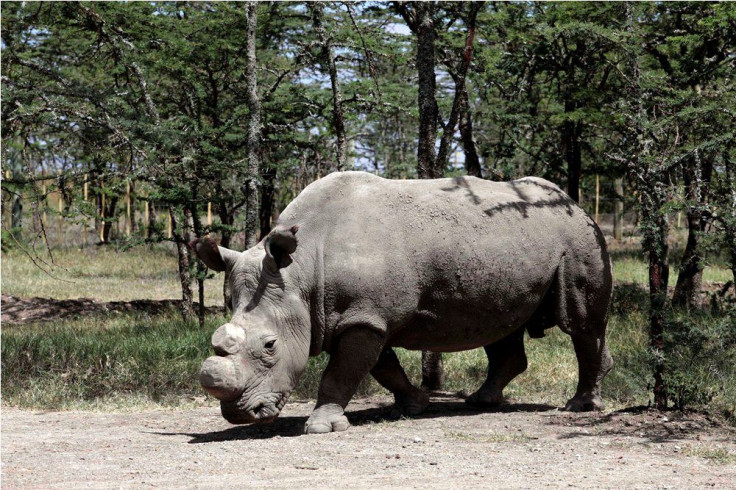Last One Standing: Last Male White Rhino Under 24/7 Surveillance

The last male rhino left standing is now under strict surveillance to protect him from illegal hunters. Armed guards are keeping a watchful eye for Sudan, the rhino.
Sudan now becomes the last male rhino of its kind. He is now under protective care at the Ol Pejeta Conservancy in Kenya. Belonging to a rare, white rhino sub-species, Sudan is one of the five remaining white northern rhinos in the world. Together with his two female companions, they are the only ones left that roam free since the other two are housed in a zoo.
Efforts have been doubled to help protect the last male species in hopes that he could breed with the other female rhinos of his kind. To ensure that Sudan is closely monitored, he wears radio transmitters and had his horns cut off to hopefully discourage poachers from hunting him.
Originally, there were four white rhinos transferred from Dvur Kralove Zoo in Czech Republic. The translocation of these creatures was carried out to let them live in a favourable breeding ground in an attempt to save the species from extinction.
The environmental conditions at Ol Pejeta are ideal for the rhinos to start breeding and hopefully raise the population of the rare species. However, late in 2014, Suni died of natural causes, pushing the species nearer to extinction.
In the 1960s, more than 2,000 northern white rhinos roam the land, according to the World Wildlife Fund, or WWF. However, due to increasing poaching activities, the number was reduced to 15 by 1980, and in 2015, only five remain alive.
According to Inquisitr, the Kenya Wildlife Service reported that in 2014, there were 54 rhinos killed by poachers. Even if poachers will not kill the rhino, cutting off the animal’s horn will leave them vulnerable to infection since it is still an inflicted wound. The attempts to breed this near-extinct species were unsuccessful since Sudan is past his reproductive stage, but scientists are hopeful.
White rhinos comprise the largest of the rhino family and have been hunted down for their horns. These horns are then used to make dagger handles and also believed to have medicinal value– a superstition common among Asian cultures but have been disproved by scientists.
To contact the writer, email: wendylemeric@gmail.com





















